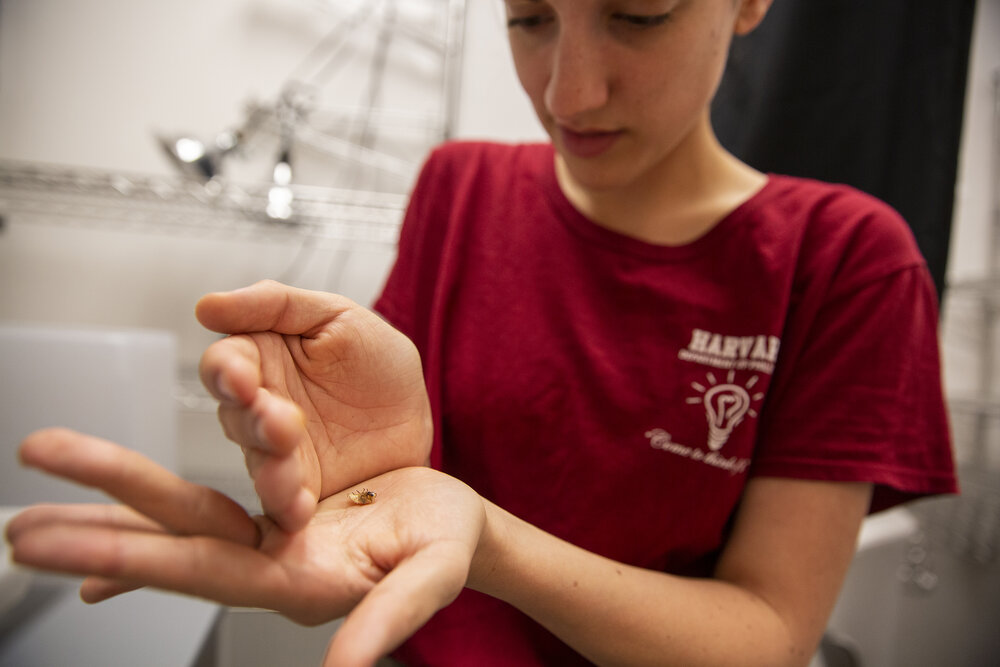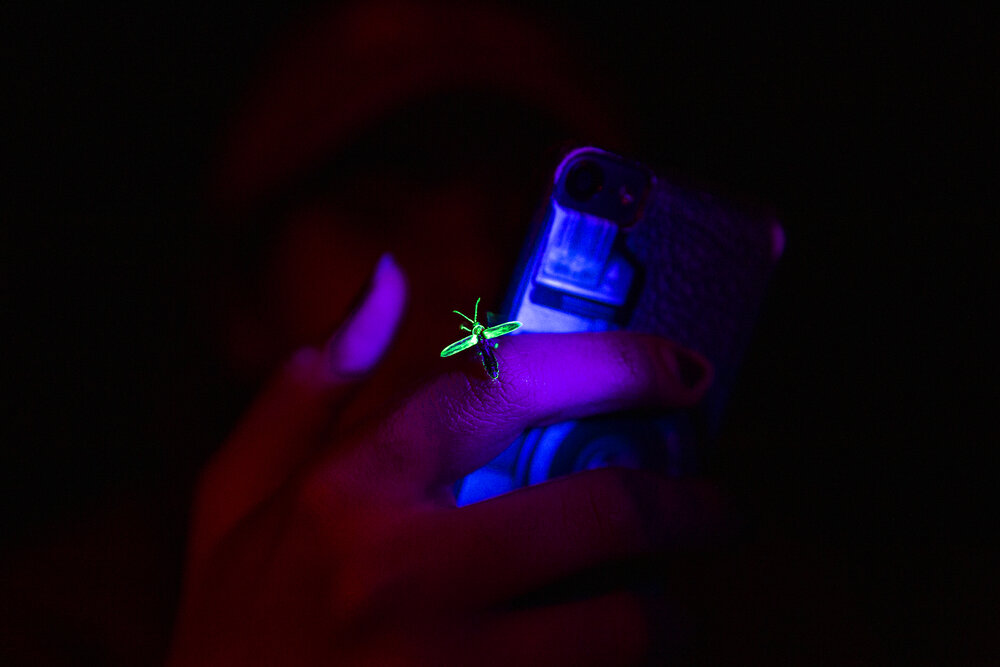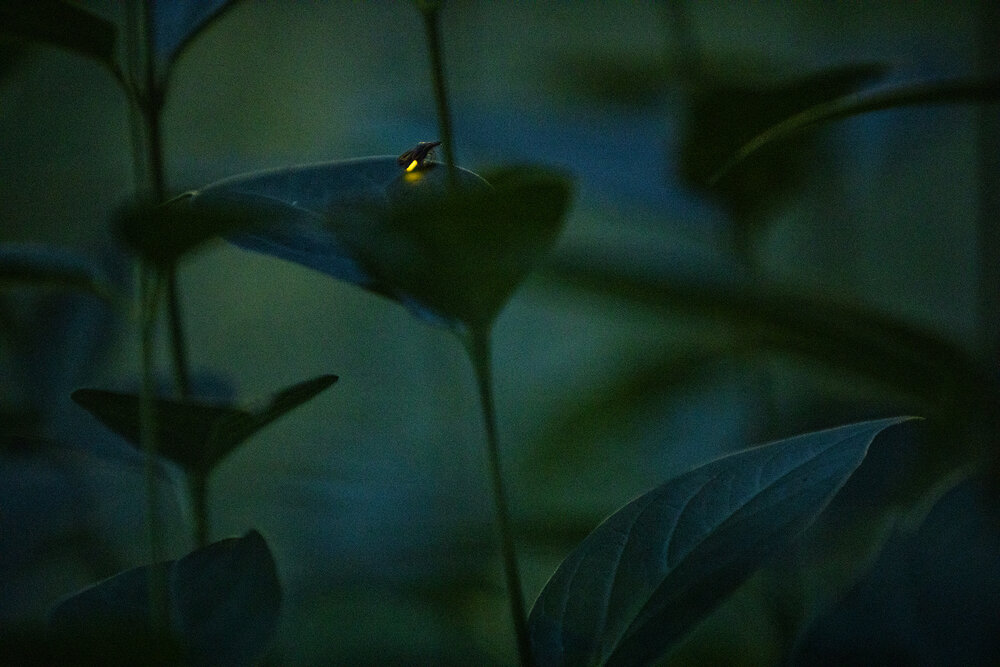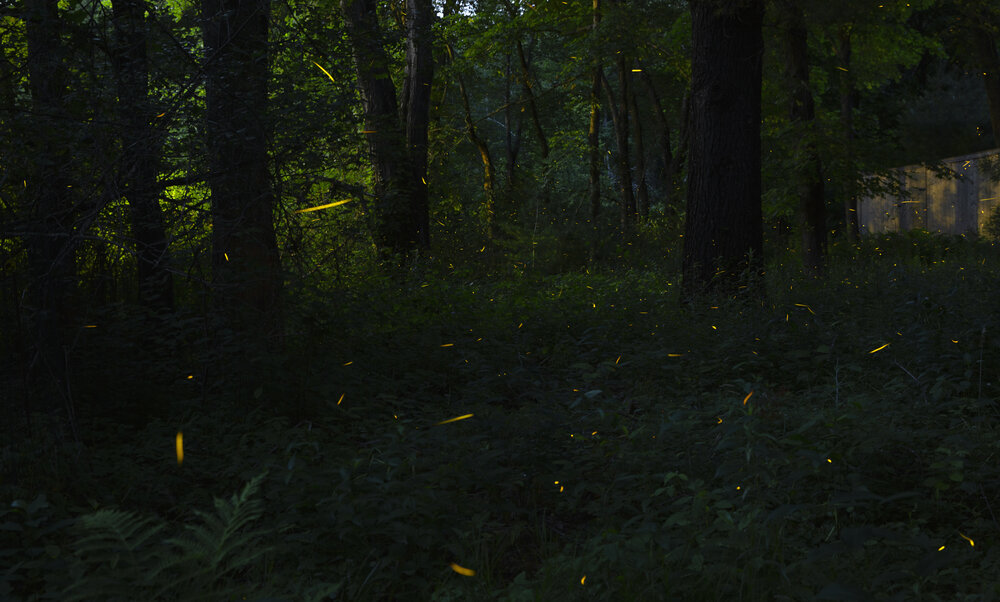
In this double exposure, a female firefly (foreground) responds to a nearby male flashing in the grass. Fireflies communicate through light, using species-specific flash patterns to attract mates during the summer. The male and female continue a “flash dialogue,” a call-and-response pattern, until the male finds her in the dark. (Photos by Anna Miller/Animalia Podcast)
Fireflies aren’t all sweetness and light…they also have a dark side too!
Renowned firefly researcherSara Lewis and PhD student Avalon Owens discuss all things lightning bugs, including surprising backstories of predation, toxins, and deception. Turns out, there’s a lot more going on in our backyards than we think!
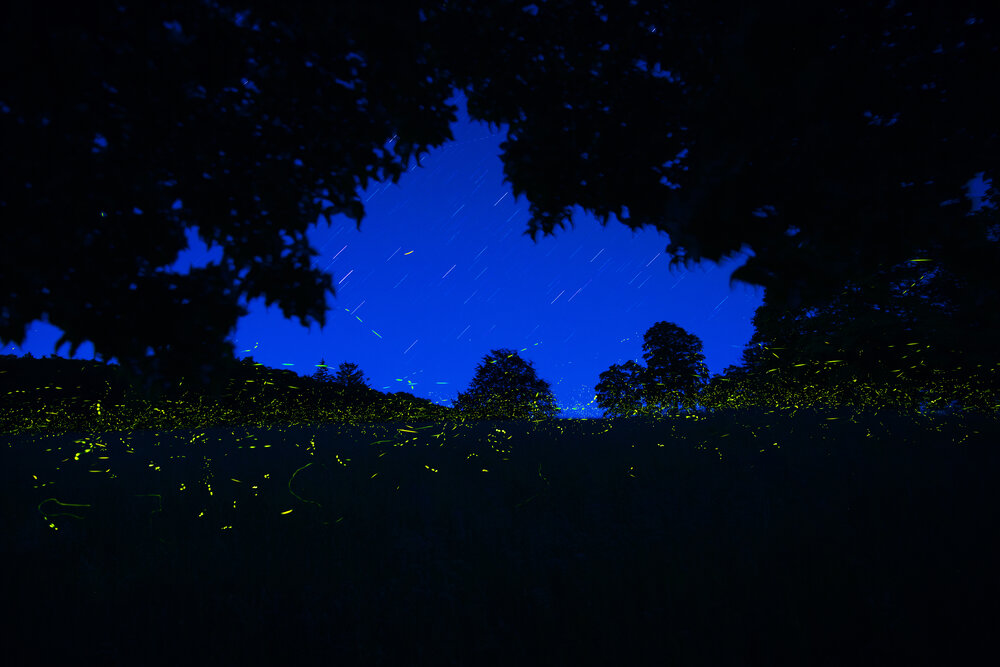
A meadow bursts with light nearly two hours after sunset, with each firefly species emitting its unique flash pattern. Fireflies only fly around and flash to find mates for a brief two-week period, before they mate, lay eggs and then die.
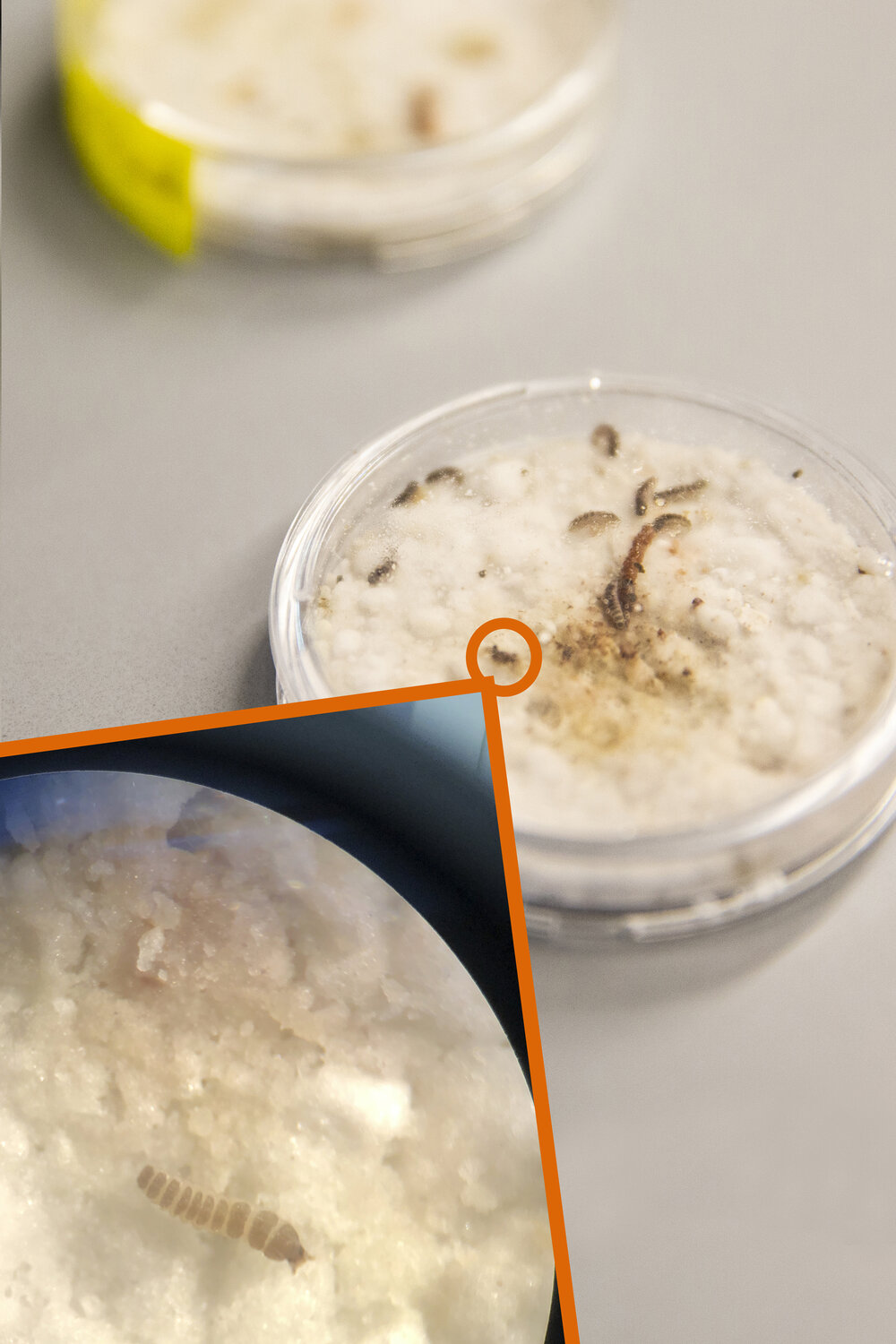
A firefly spends the majority of its life – roughly two years – underground as tiny larvae (as seen under a microscope). Firefly larvae are predatory, and some species specialize in devouring earthworms.
Tufts PhD student Avalon Owens brings a firefly pupa out in the lab. Even at a young age, a firefly is able to glow, signaling its toxicity to predators.
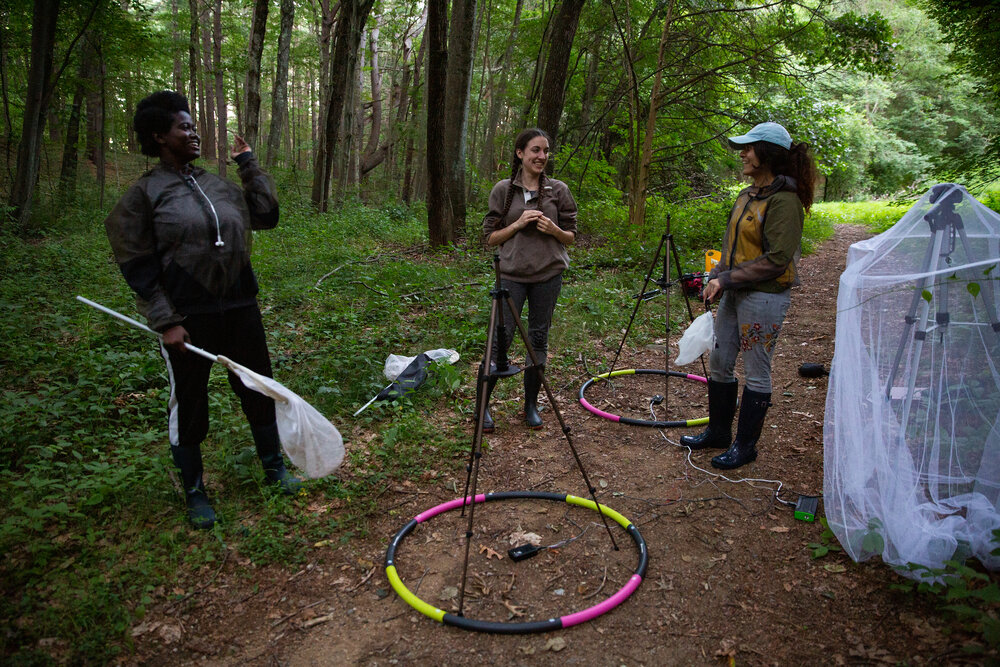
Research assistant Francisca Donkor (left), PhD student Avalon Owens and research assistant Vaidehi Chotai, share a laugh after setting up equipment at their field site on a wooded trail in Concord, Mass. The team is testing whether light pollution and specific colors of light impact firefly courtship and preferences.
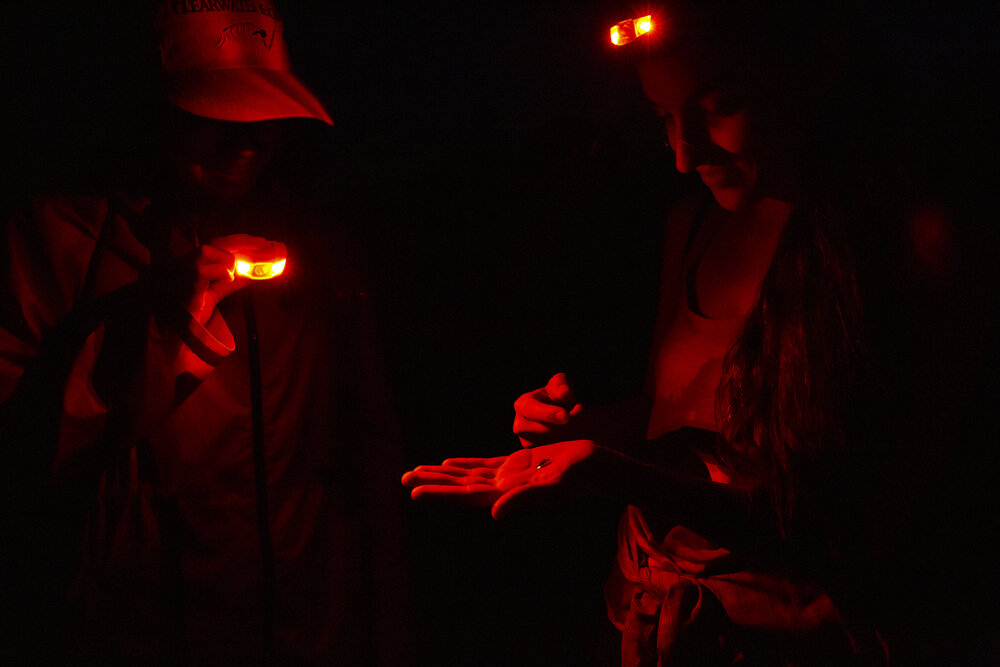
Research assistant Oliver Nguyen (left) shines some light on Avalon Owens as she holds a male firefly in the palm of her hand at their research site in the woods of Concord, Mass. The team conducts their research entirely in the dark, and only turn on their red headlamps at the end of the evening, once all of the data has been collected.
Before releasing him into the night sky, researchers mark a male firefly with nontoxic paint to ensure that they do not recapture him in future experiments.
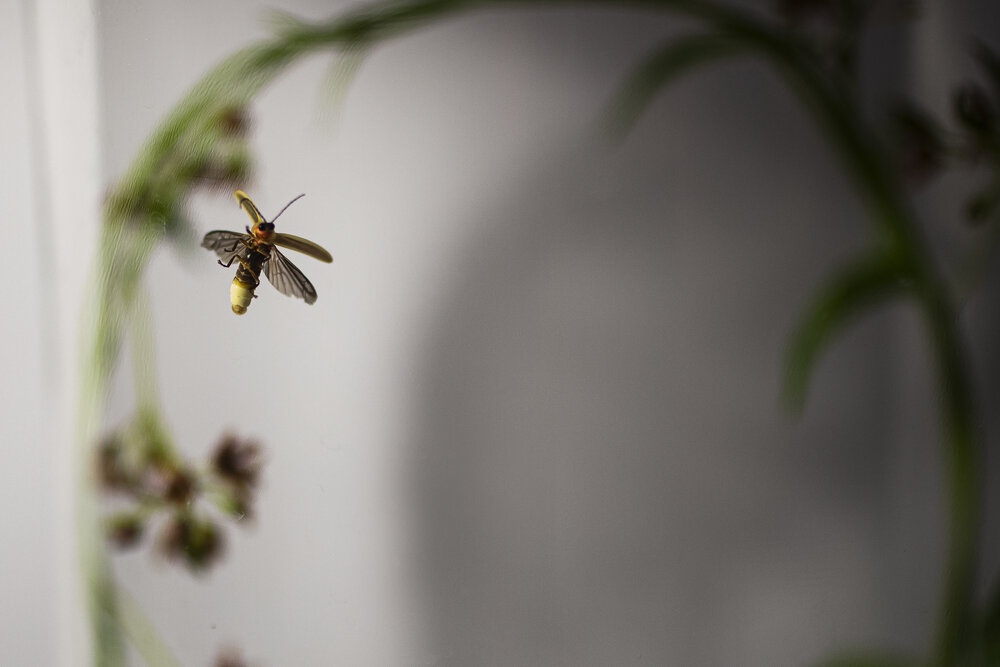
Fireflies are beetles. “They fly using just one pair of wings…. And they have a second pair of wings that have been modified into hardened covers that fold back when the firefly isn’t flying, to protect those delicate flight wings. That’s a characteristic of all kinds of beetles, like ladybug beetles,” says Sara Lewis.
Although they are capable of flying, North American female fireflies often sit in the grass, looking towards the sky for a particularly attractive suitor to fly by. Research shows that female fireflies prefer “flashy” males who either have a higher flash rate or who give slightly longer flashes than other males of the same species. Once a female firefly sees a male that she likes, she flashes back, and the courtship begins.
There are more than 2,000 species of fireflies worldwide. Lightning bugs live in woods, meadows, and wetland areas and can be found on every continent except Antarctica.
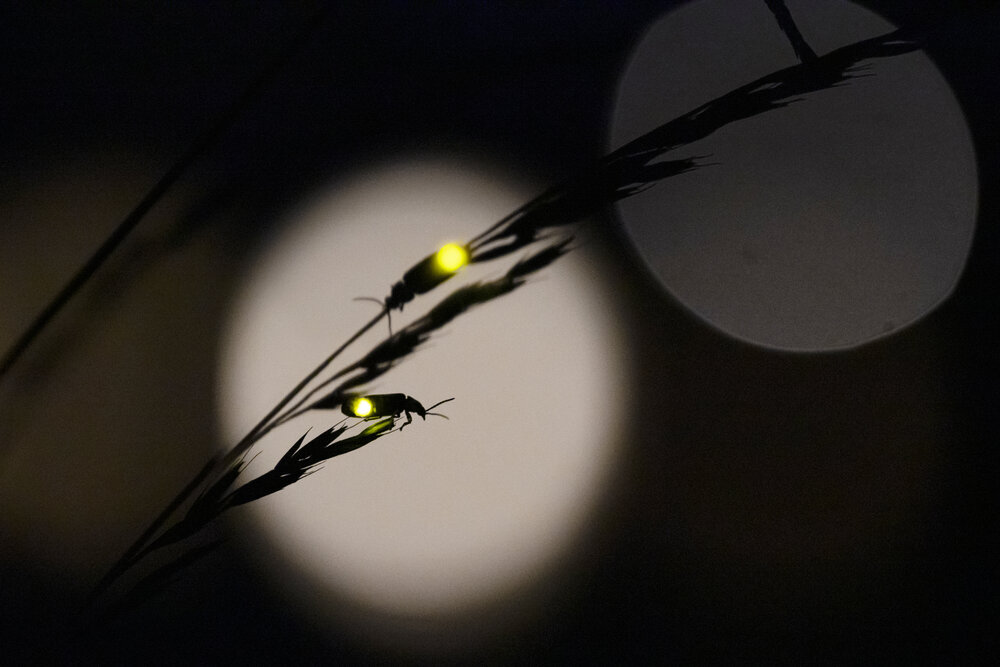
Lights from a nearby house backlight a male and female firefly in a suburban backyard. Firefly populations appear to be on the decline, likely due to habitat loss, use of pesticides, and light pollution.

How to Help Fireflies
1. Create a firefly-friendly habitat just by letting your grass grow! And avoid using pesticides and herbicides.
2. Turn off your porch light and use curtains at night. Light pollution impacts fireflies’ ability to communicate.
3. Join Firefly Watch (link) to help scientists learn more about firefly populations and how to protect them.
To learn more about fireflies, check out Sara Lewis’ book, “Silent Sparks: The Wondrous World of Fireflies” (link)
Join Podchaser to...
- Rate podcasts and episodes
- Follow podcasts and creators
- Create podcast and episode lists
- & much more
Episode Tags
Claim and edit this page to your liking.
Unlock more with Podchaser Pro
- Audience Insights
- Contact Information
- Demographics
- Charts
- Sponsor History
- and More!

- Account
- Register
- Log In
- Find Friends
- Resources
- Help Center
- Blog
- API
Podchaser is the ultimate destination for podcast data, search, and discovery. Learn More
- © 2024 Podchaser, Inc.
- Privacy Policy
- Terms of Service
- Contact Us

